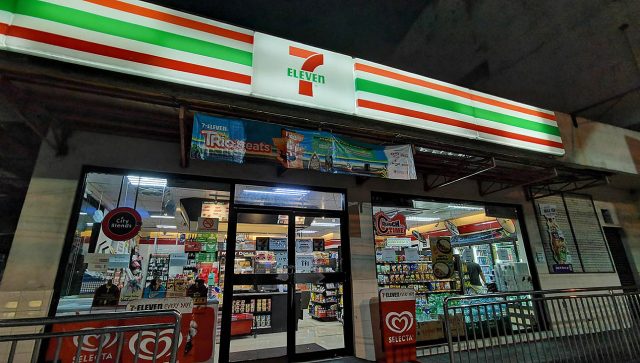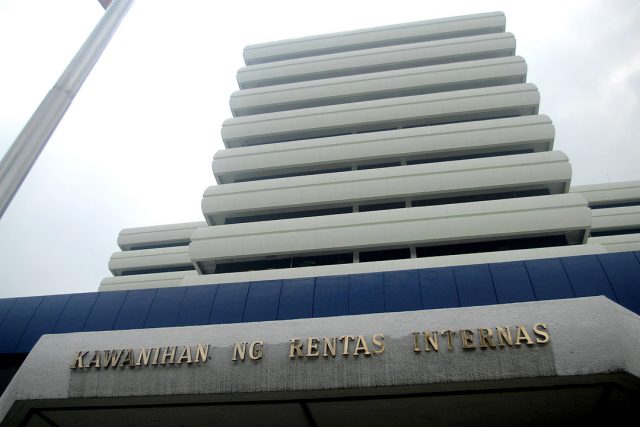MORE famous men are wearing dresses: from actor Billy Porter on the red carpet to singer-songwriter Harry Styles on the cover of Vogue. They have prompted much commentary, both positive and negative, leading fashion commentators to ask if frocks might become a regular part of men’s sartorial landscape.
At this year’s Met Gala, racing car driver Lewis Hamilton wore a white lace dress over a black suit and singer Troye Sivan wore a simple black gown. More recently, rapper Lil Nas X wore a purple suit with a matching train to the MTV Video Music Awards and a Cinderella-style gown at an earlier award ceremony.
The trend signifies a return to ancient sartorial norms, when more androgynous clothing was accepted and, indeed, required.
Such clothes were not “dresses” as we understand them today: the dress is a garment that has become indelibly “feminine.” But could skirts and dresses become mainstream garb for 21st century men beyond these celebrity trailblazers?
Our contemporary construct of masculinity is, of course, relatively recent. Until the early 20th century, boys and girls wore dresses until boys were “breeched” (put into breeches or “short trousers”) at around seven years old.
Pink was a manly color, and it was almost impossible to tell boy and girl toddlers apart.
Before the 15th century, much clothing for men and women was fairly androgynous, particularly outside Europe — where in many cultures this continues today.
Japanese kimono are robes with only subtle hints at gender difference. In parts of North Africa, the jellabiya — a long, loose robe perfect for the warm climate — is worn daily by men and women.
Ancient Egyptian men, including pharaohs, wore the schenti, a wrap skirt similar to a kilt. This garment was so practical and versatile it remained popular for over 2,000 years.
Ancient Greece and Rome saw universal wearing of the tunica, a simple gown that was shorter and looser for men, but constructed the same way for both sexes.
The elite wore longer chiton and toga, which could be more elaborately accessorized to indicate the wearer’s gender. In these societies, the higher a man was on the social ladder, the longer his gown.
Divided garments (not then known as “trousers”) were generally worn only by soldiers and the working class. To ancient Greeks and Romans, leg coverings were more representative of the barbarian than powerful, civilized men.
From 800 AD, bifurcated (divided, two-legged) styles slowly emerged in the Christian world, propagated by the medieval emperor Charlemagne as a way of linking physicality and aggression with new European concepts of “manliness.” Such garments later came to symbolize (male) control and authority.
This was a gradual process, however. In medieval Europe, men and women wore long, layered clothing and tunics until the slow advent of tailoring in the 1400s. Even armor, the most “macho” of male attire, could still feature a metal “skirt” pleated similarly to contemporary tunics.
From the 15th century on, shorter tunics took hold for men, beneath which they could wear hose or stockings and, later, breeches.
Aside from brief outlier trends, (for example the lampooned and short-lived “petticoat breeches”) men’s hemlines continued to move north.
The advent of stockings and a codpiece and, until the 1820s, relatively tight-fitting pants for men, acted as a non-verbal reminder of their political and economic power.
This was in stark contrast to the treatment of women’s legs, which as one writer put it in 1818:
although dressed, are […] immediately connected with parts which are not, and which decency strictly conceals from view.
Women fought for a long time to wear trousers, making discreet strides in the adoption of bloomers as underwear in the 19th century. While gradually accepted as trouser-wearers in the early 20th century (and in the professional realm from the late 1960s), the same freedom of clothing choice has not been given to men.
For women, wearing trousers represented physical freedom, making certain jobs — and therefore, financial freedom — easier. Men do not have that same need, in a practical sense, to adopt dresses.
Arguably, a dress does not make any aspect of life easier, but it does allow an individual to express themselves in different ways. Restricting this suggests repression of far more than physical movement.
It could be argued that since the 18th century, (in the west at least), men have played second fiddle to women in terms of glamour and excitement in clothing. Contrary to popular belief, it was generally women who imposed what we now see as extravagant and restrictive sartorial customs, such as the cage crinoline. For many women, fashion was the one area of life over which they had some control.
During the 19th century, an era famously described by psychologist Carl Flugel as the “great male renunciation” of brilliant fashion, men had eye-wateringly little choice of garments compared to women. The monopoly of the (male) suit has perhaps been a result of this one-sidedness. Promoting dresses for men could redress the imbalance.
If dresses are to become a genuine part of menswear once again, we need first to establish what differences, if any, there will be with women’s. How will the fit be determined? How will they be worn?
This is not necessarily the same as producing androgynous or gender fluid clothes. It is about dresses that will allow men, who wish it, to still feel masculine — as trousers can make women feel feminine.
While fashion slacks were often made to conform to a woman’s body (putting aside utilitarian and wartime uniforms) there seem to be very few dresses made exclusively for the male physique.
Billy Porter’s velvet tuxedo gown worn to the 2019 Oscars was an exception. A hybrid male and female garment, it used black to create a link to contemporary womenswear, and men’s traditional evening wear. Crafted by designer Christian Siriano, it consisted of a tuxedo-style bodice with voluminous, ballgown skirt.
This dress was elite rather than mainstream fashion, created exclusively for Mr. Porter. Mr. Styles’ ethereal Gucci number on the Vogue cover is likewise hardly accessible to the everyday consumer, demanding a high level of confidence to pull off.
The same can be said of frocks and frock-spirations chosen by Carl Clemons-Hopkins at the 2021 Emmys and Queer Eye’s Jonathan Van Ness at the Creative Arts Emmys in 2018.
As Oscar Wilde put it when discussing women’s dress reform in the 1880s:
If the divided skirt is to be of any positive value, it must give up all idea of being identical in appearance with an ordinary skirt … [it must] … sacrifice its foolish frills and flounces.
Perhaps men’s dresses should aim for that same end: not to masquerade as anything else, but to take on a life of their own as new, separate garments.
Examples such as Mr. Porter’s and Mr. Styles’ frocks prompt intrigued debate. Other examples of men wearing dresses are usually associated with transvestism or those undergoing gender reassignment.
Huge progress over the past few decades has made their visibility and acceptance far more widespread, along with gender fluid and queer identity becoming a regular part of the fashion landscape, thanks to designers such as Harris Reed, Telfar Clemens, and Charles Jeffrey Loverboy. Each, in their own way, are creating and championing fluid fashion, showing the world how it can be done.
However, we are not yet at the point where most men would consider a dress a viable option, or where a man wearing a dress would not provoke assumptions around sexuality or gender identity. We also seem to be at a crossroads in terms of how men in dresses are received by different communities.
A controversy arose earlier this year when cisgender man, the rapper Kid Cudi, performed on Saturday Night Live wearing a dress intended to pay tribute to Kurt Cobain.
In 1993, Mr. Cobain had boldly donned a similarly patterned, but shorter frock on the cover of The Face magazine, attracting considerable backlash.
In 2021, wearing a fuller, longer, more classically “feminine” style, Mr. Cudi was met largely with praise. However, some commentators — particularly those from the LGBTQI community — felt his choice was nothing but a “costume” worn by a performer.
Some pointed out that what was a publicity stunt for him amounted to a “life and death” decision, for which trans people have been severely bullied. The reality is that however casually a man might wear a dress, and whatever his motivations for doing so, the choice is fraught with political, emotional and social ramifications. It will be commented on and judged, positively or negatively.
Earlier this year, singer Post Malone’s stylist Catherine Hahn put the singer in a dress, another tribute to Mr. Cobain.
The success of this outfit inspired her to create “a unisex dress that could be worn every day. To work, to school, to skateboard in, or on a date.” The result is a calf-length, oversized plaid shirt that recalls ’90s grunge styles and certainly offers a fun, fresh, casual option for men.
However, it is still unisex, rather than aimed specifically at men. Its shirt-like cut makes it a familiar, non-threatening segue for those wishing to experiment with dresses. This style is the closest we have seen to a potentially mainstream, workable male frock option.
Dresses are likely to remain a novelty for many men, a defiant show of bravery and individuality akin to the female pioneers of the rational and aesthetic dress movements of the 19th and 20th centuries.
Mind you, during this pandemic, there has been a surge in male skirt designs by the likes of Burberry and Stefan Cooke.
Many of these take inspiration from the traditional “man skirt,” the kilt. But longer, calf-length, pleated and A-line examples have been championed too. More men may have felt comfortable experimenting with a skirt or dress during the privacy of lockdown.
The year 2020 was a seismic shift in life as well as fashion. But given the highly gendered and ingrained nature of clothing codes, it seems unlikely we will see men’s dresses go mainstream anytime soon.
Lydia Edwards is a Fashion historian at the Edith Cowan University.





















